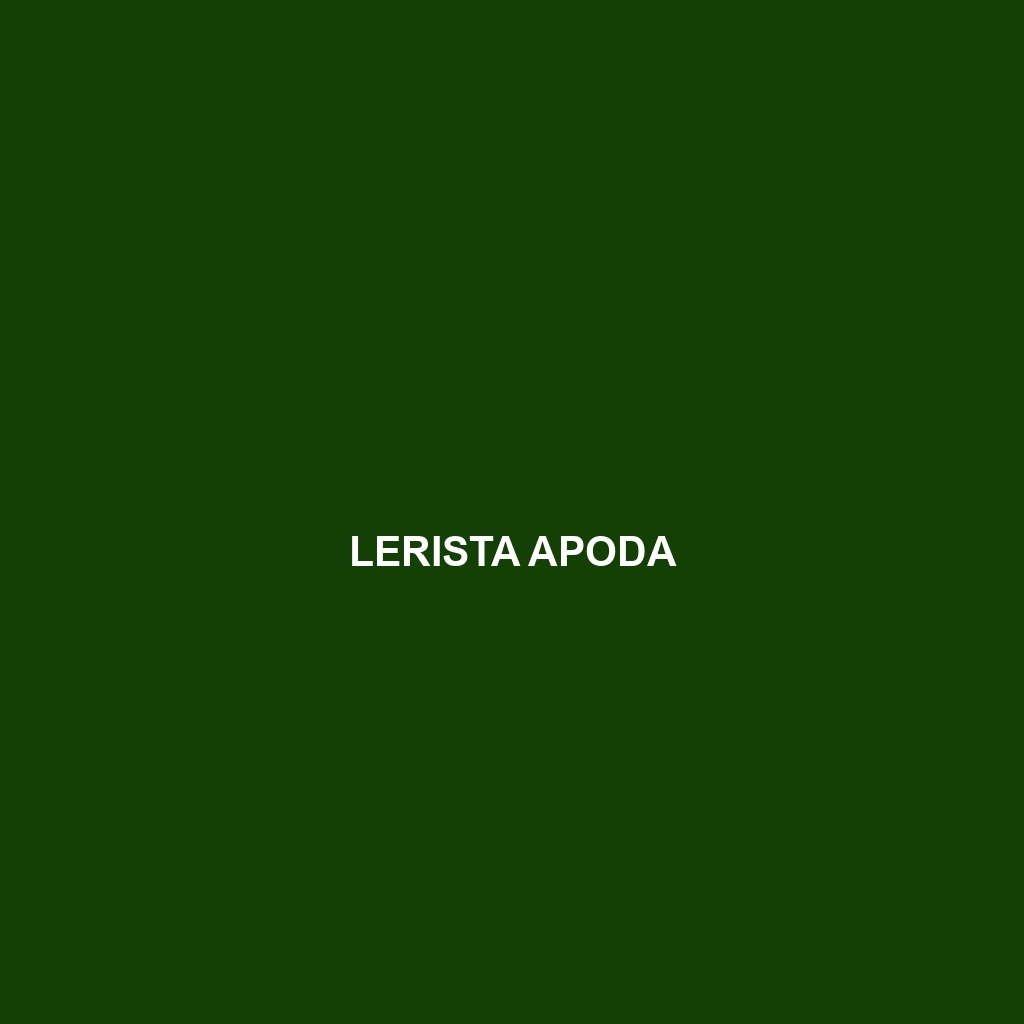Common Name
Lerista apoda
Scientific Name
Lerista apoda
Habitat
Lerista apoda, commonly known as the legless skink, is primarily found in the diverse climatic regions of Australia, particularly inhabiting sand dunes, dry woodlands, and grasslands. This species thrives in temperate forests and arid environments, where the sandy substrate provides optimal conditions for burrowing and foraging. The key characteristics of its habitat include well-drained soils that allow for easy movement underground, making it well-adapted to avoid both predation and harsh environmental conditions. These habitats are often in proximity to savannas, where a mix of grassy plains and scattered trees creates an ideal microhabitat.
Physical Characteristics
Lerista apoda is a slender, elongate lizard that typically reaches a length of about 15 to 30 centimeters. Its most distinctive feature is its lack of limbs, which gives it a unique streamlined body that is perfectly adapted for a burrowing lifestyle. The species exhibits a smooth, shiny skin that can vary in coloration, generally presenting shades of brown, gray, and cream. This coloration aids in camouflage against the sandy and earthy substrates of its habitat. Additionally, Lerista apoda has a pointed snout, which helps in digging and navigating through the sandy environment, while its small, non-functional eyes are adapted to its subterranean environment.
Behavior
The behavior of Lerista apoda is largely influenced by its environment. This species is primarily nocturnal, being most active during the cooler parts of the night. During the day, it prefers to remain hidden to avoid predators. Lerista apoda is known for its unique burrowing habits, creating intricate tunnels in sandy substrates. Socially, these skinks are relatively solitary; however, during the breeding season, males may engage in displays of dominance that include head-bobbing and body posturing to attract females. Their remarkable adaptations include the ability to detect vibrations in the ground, which aids in locating prey and avoiding threats.
Diet
Lerista apoda is classified as an insectivore, primarily feeding on small invertebrates such as ants, termites, and other insects. Using their keen sense of smell and ability to detect vibrations, they forage effectively underground and on the surface. Their diet plays a critical role in controlling insect populations within their ecosystem, indicating their importance as a natural pest controller. Because of their feeding habits, Lerista apoda is well-adapted to finding food in arid environments where food sources can be sparse.
Reproduction
The reproductive cycle of Lerista apoda generally occurs in the warmer months, with mating typically taking place from late spring to early summer. Following mating, females exhibit oviparity, laying a clutch of approximately 3 to 8 eggs. The eggs are often deposited in sandy soil that provides warmth and moisture necessary for incubation. The gestation period lasts around 6 weeks, after which the young hatch fully formed, resembling smaller versions of the adults. Maternal care is minimal, as the young are independent upon hatching, relying on their instinctual foraging skills to survive.
Conservation Status
The conservation status of Lerista apoda is currently classified as least concern, according to the International Union for Conservation of Nature (IUCN). This classification indicates that, while the species faces pressures from habitat loss and environmental changes, it is not presently in immediate danger of extinction. Conservation efforts focus on habitat preservation and mitigating the impacts of urban development and agriculture. Nonetheless, ongoing monitoring is essential to ensure that this species remains stable, particularly as climate change poses future risks to its habitat.
Interesting Facts
One fascinating aspect of Lerista apoda is its unique adaptation to a legless existence, which allows for remarkable maneuverability in sandy environments. This species is often mistaken for snakes due to its elongated body and lack of limbs; however, its smooth scales and facial characteristics differentiate it from true serpents. Additionally, the fact that it can survive in harsh conditions with limited water further highlights its resilience and specialized adaptations. The ability to detect vibrations via the ground allows it to have an advanced awareness of its surroundings, which is crucial for both finding food and evading predators.
Role in Ecosystem
Lerista apoda plays a significant role in its ecosystem, particularly as an insect predator. By controlling the populations of various insects, it contributes to the ecological balance of its habitat. Furthermore, as a part of the food web, it serves as a prey species for various larger predators, thereby supporting the overall biodiversity. Its burrowing behavior also helps aerate the soil, facilitating nutrient cycling and enhancing the health of the ecosystem. By maintaining this ecological equilibrium, Lerista apoda exemplifies the importance of even the smallest species in preserving the overall functionality of their habitats.
